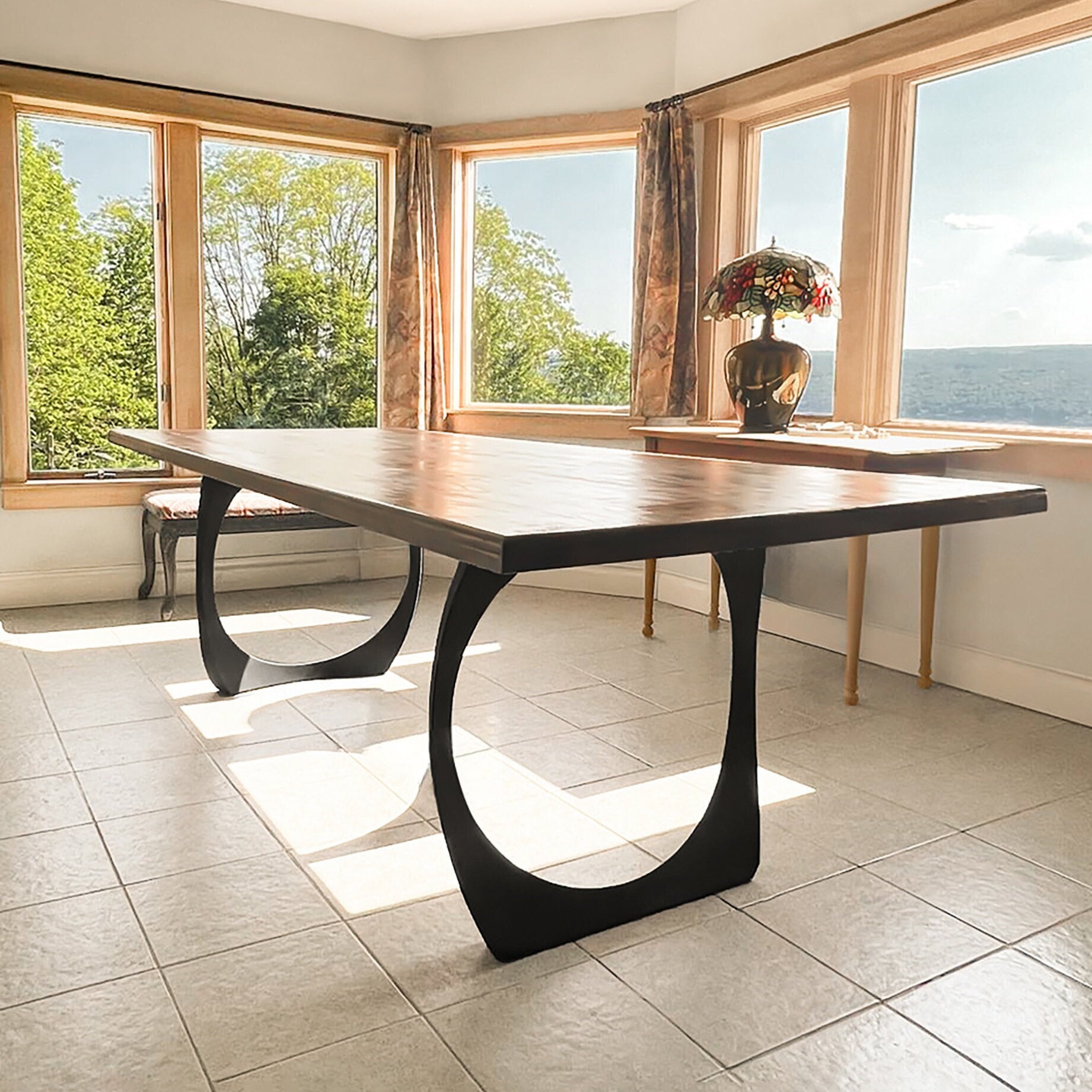Upgrade Your Furniture with Stylish Dining Room Table Legs
Upgrade Your Furniture with Stylish Dining Room Table Legs
Blog Article
The Ultimate Guide to Selecting the Ideal Designs for Eating Table Legs
Choosing the best styles for eating table legs is a nuanced process that calls for balancing aesthetic charm with practical considerations. Custom-made choices provide an opportunity for personal expression, ensuring your table becomes an one-of-a-kind focal point.
Modern Eating Table Legs
In the world of contemporary furniture layout, modern table legs stand apart for their streamlined and cutting-edge aesthetic appeals. Identified by clean lines and minimal forms, these legs frequently use materials such as stainless-steel, chrome, and solidified glass to develop an advanced aesthetic allure. Not just do they improve the general elegance of the dining table, yet they also add to its structural stability and functional versatility.
One of the crucial functions of modern eating table legs is their versatility to different table tops, from marble and glass to wood and engineered surface areas. Designers regularly explore geometric forms, including angular, conical, and even sculptural types, to include a distinct touch to each piece. This strategy not just makes certain a modern look but also enables higher customization to match specific tastes and interior design.
Modern eating table legs also emphasize ease of upkeep and resilience. Therefore, contemporary dining table legs symbolize both type and function, making them a popular choice in today's design landscape.
Rustic Farmhouse Styles
While modern-day eating table legs mesmerize with their smooth, minimalist layouts, rustic farmhouse designs provide a contrasting yet equally engaging technique to furniture looks. Rooted in simplicity and functionality, rustic farmhouse table legs often feature durable, solid wood building and constructions that stimulate a sense of heat and custom. These designs commonly integrate reclaimed or troubled wood, including character and a classic appeal to any eating space.
Among the most distinct functions of rustic farmhouse table legs is their significant, strong appearance. Usually crafted from oak, yearn, or various other sturdy timbers, these legs can include a selection of shapes, from straight and square to elegantly transformed or tapered designs (dining room table legs). The workmanship emphasizes toughness, with hand-finished information that highlight the natural grain and blemishes of the wood, making each item uniquely stunning
Additionally, rustic farmhouse legs often use time-honored joinery methods, such as mortise and tenon joints, ensuring stability and long life. This style is especially fit for developing a cozy, welcoming environment, best for family events and public dining experiences. By integrating rustic farmhouse table legs, one can effortlessly mix capability with classic appearances, achieving a timeless charm that improves the dining atmosphere.
Traditional and Classic Designs
Enduring beauty specifies timeless and classic dining table leg designs, effortlessly mixing practice with sophistication. These designs capture the essence of withstanding appeal, usually featuring intricate craftsmanship that pays homage to historical styles while preserving a contemporary charm (dining room table legs). The aesthetic balance accomplished with such legs ensures they stay appropriate and elegant throughout different interior settings, from conventional to contemporary homes

In addition, the versatility of classic table legs allows them to enhance numerous tabletop layouts, creating a cohesive and unified eating experience. Their timeless nature makes sure that they hold up against changing patterns, making them a valuable investment for any type of eating space. Whether you seek downplayed class or grandiose charm, traditional table legs supply a perfect blend of form and function, improving you can look here the general aesthetic of your dining area.
Customized and Special Choices
When it involves eating table leg designs, personalized and unique options offer a distinctive way to showcase personal taste and creativity. These choices allow homeowners and designers to move past standard layouts, developing a table that absolutely mirrors specific style and the overall theme of the eating room. Personalized legs can be crafted in a myriad of forms, sizes, and patterns, from elaborate carvings to modern geometric kinds, making it possible for countless opportunities.
Special table legs can act as a centerpiece in an area, attracting interest and sparking conversation. As an example, legs fashioned to appear like tree branches can bring a touch of nature inside your home, while sculptural metal legs can convey a modern and industrial flair. Another popular fad is including multimedias, such as combining timber with steel or glass, to produce a striking contrast and included visual interest.

Product and Complete Options
Choosing the best material and finish for eating table legs is crucial to achieving the wanted visual and capability. Continued The option of materials can substantially affect the table's sturdiness, maintenance, and overall style. Typical materials for eating table legs include timber, metal, and acrylic.
Steel legs, such as those made from stainless steel or iron, offer a modern-day and commercial look. Polymer legs, although much less standard, provide a contemporary and airy feeling, suitable for smaller sized areas or minimalist styles.
Timber legs can be tarnished to enhance their all-natural grain or repainted for a more consistent appearance. Metal legs might be brightened for a streamlined finish or powder-coated for added security versus wear and corrosion.
Eventually, the option of product and finish ought to straighten with the table's overall style, use needs, and the existing décor of the dining area.
Verdict
The selection of table legs substantially influences the visual and functionality of a dining area. Modern styles use streamlined, minimal allure, while rustic farmhouse designs offer warmth and character. Traditional and ageless styles add beauty through intricate craftsmanship. Customized choices permit individualized expression. The selection of products and coatings better boosts the total appearance and durability. Careful consideration of these factors ensures a harmonious and aesthetically attractive dining location.
Report this page